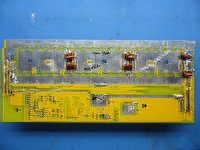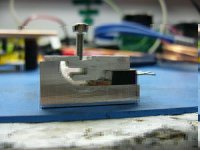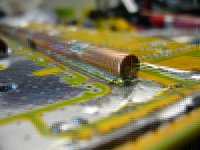Yeah Doc, I've used it to join Aluminium to Aluminium which is a tad more challenging than Aluminium to Copper (pretty much any solder will easily wet clean copper).
A method I found to work was;
Clean both joining surfaces with a scouring sponge/fine sandpaper then wipe down with IPA/Ethanol. If your aluminium heat-spreader is hard anodised then you will need to work hard to get through that layer. This replaces the long term accumulated deeper oxide layer with a fresh one of minimum thickness - easier to get through later on.
Then evenly preheat the sections with a propane torch (careful of warping!, an oven would probably be better for this), then quickly lay down the required thick line/s of solder along the joint plane with a big Iron (It wont wet the Alu very well at this point, but the flow onto the copper pipe should keep the solder mobilised in a reasonably straight line). Then re-flow the line of solder with the propane torch and work your way along brushing in short linear strokes though the molten pool until you achieve decent wetting of the Aluminium. Use a small
stainless steel (not brass) wire brush just behind the torches flame front. This allows the Alu-oxide layer to be abraded through whilst protected from the majority of atmospheric O2 by the molten pool of solder. It will look messy after the brushing, but you can re-flow it yet again after you've got good surface wetting, add a little more solder and you've got a smoothish fillet. I've read that Zinc based liquid flux makes things easier, but I didn't use it so I cant comment.
Both Multicore and Stannol manufacture the Pb80Sn18Ag2 combo, there may be others as well. Very few distributors stock it in small quantities though.
http://www.newark.com/multicore-solder/629443/solder-wire-alusol-0-91mm-500g/dp/15J8243?Ntt=alusol
OR;
Straightforward for me to get V V V
http://australia.rs-online.com/web/....html?method=searchProducts&searchTerm=alusol
According to the RS international homepage, Allied Electronics is the Canadian distributor V V V
http://www.rs-components.com/index.html
But a search brings up nothing, they should be able to get it though if you call them. V V V
https://www.alliedelec.com/search/searchresults.aspx?N=0&page=no_results&Ntt=alusol&i=






